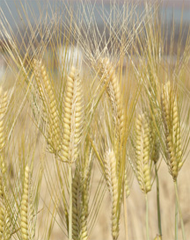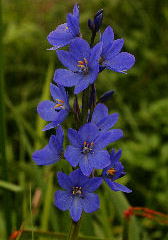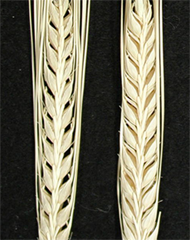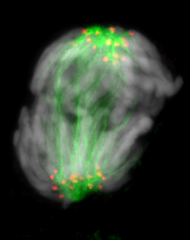
Research
Barley and Wild Plant Resource Center

- The barley germplasm collection in Okayama University includes about 14,000 accessions and has a high reputation as a representative genebank in the barley secondary diversity center of East Asia. The genebank was also nominated as one of the centers and as the secretary institution of the International Barley Core Collection. The main objectives of our group are (1) collection and preservation of barley germplasm, (2) evaluation of genetic diversity within the germplasm, (3) database documentation and worldwide sample distribution, (4) genetic analysis of significant traits in barley, and (5) development of genome resources including large scale cDNA sequences and clones, molecular markers and DNA libraries to accelerate genome-based barley diversity analysis.
Professor:Hiroshi Hisano
Associate Professor:Daisuke Saisho

- Since the foundation of the Institute, our laboratory has been collecting seeds of wild plants from all over Japan and Southeast Asia, and preserved them with their voucher specimens. We collected 29,792 seed accessions of 5,125 species of wild plants distributed in 222 plant families. Among them, 16,566 accessions of 3,782 species have been preserved as frozen stocks. At present, our seed bank contains almost all the weed species of Japan, as well as many salt-tolerant plants, aquatic plants, and endangered plant species. All data of seed accessions and their vouchers have been deposited in the database that contains photographic files of the seeds. Upon request, we are hoping for an active exchange of the deposited seeds for a pursuit of novel wild plant-related joint studies. A Seed Image Database of naturalized alien plants in Japan is freely available on our WEB site here.
Assistant Professor:Jun Yamashita

Group of Genetic Resources and Functions

- This group aims isolation of useful genes from various genetic resources of grass species, particularly barley, and clarify the roles of these genes by molecular approaches. Barley is reportedly the world’s fourth most important cereal crop, and the IPSR Center maintains a large barley collection from all over the world. Our main interests include genes that control seed / flower morphology and quality-related characteristics. For example, typical barley cultivars have caryopsis with adhering hulls at maturity, known as covered (hulled) barley. However, some barley cultivars are of a freethreshing variant, called naked (hulless) barley. Covered barley is used as an animal feed and for brewing, although naked barley is well suited for use as human food. We identified the gene controlling covered/naked caryopsis trait in barley through positional cloning. We revealed that an ethylene response factor (ERF) family transcription factor engenders this trait. Functional analyses of Nud/nud gene at the molecular levels are currently underway in the laboratory. Furthermore, we have identified polyphenol oxidase genes, 1;3, 1;4 beta-glucan synthesis genes and genes determining awn length (Lks2).
Professor:Shin Taketa

Group of Integrated Genomic Breeding

- Nuclei which have very complex structures and various functions are the most important organelle in eukaryotic cells. Nuclear DNA is divided and packed into chromosomes, enabling accurate transmission of genetic information to daughter cells. Our research group is studying the molecular structures and functions of nuclei and chromosomes, mainly in plants. Our most recent goal is development of artificial plant chromosomes by analyzing chromosome functional elements: centromeres, telomeres, and replication origins. We are also interested in chromatin structure and gene expression.
Professor:Toshio Yamamoto
Associate Professor:Kiyotaka Nagaki
Associate Professor:Tomoyuki Furuta






